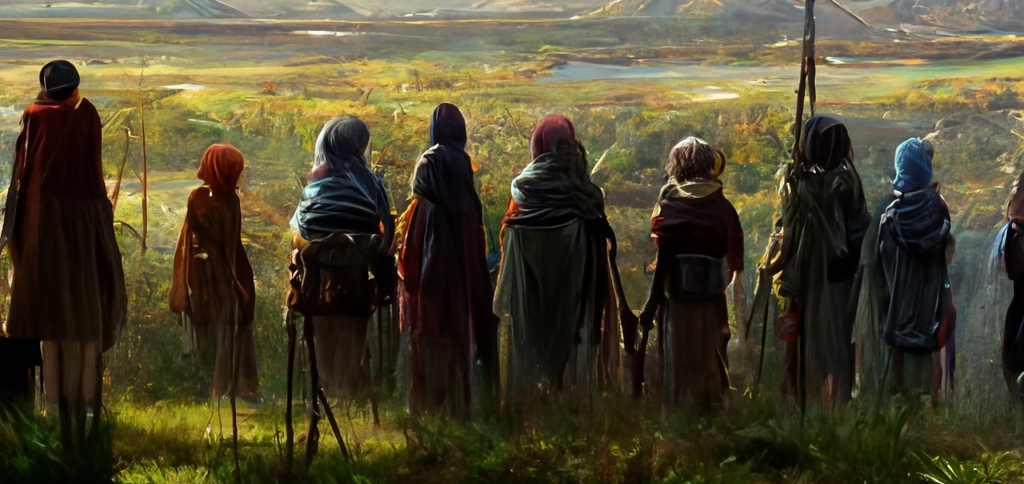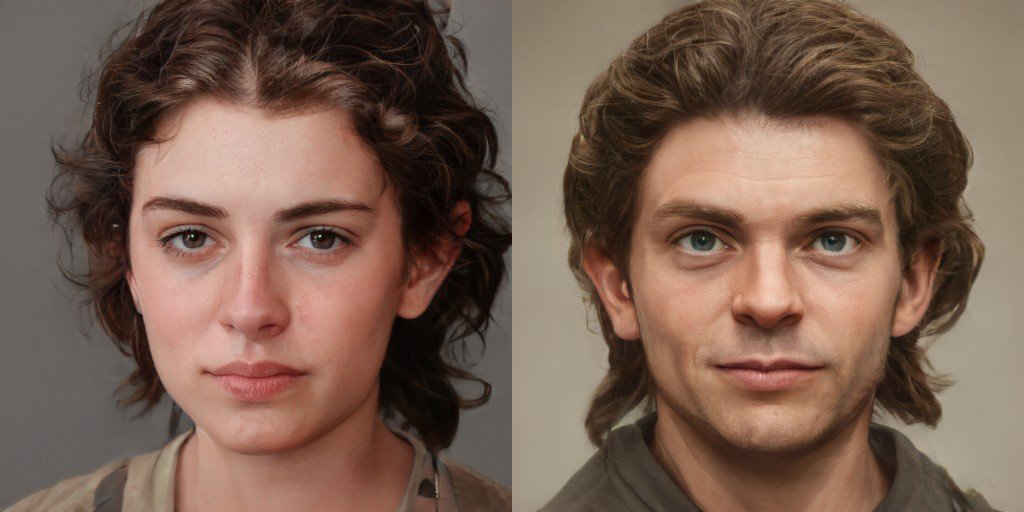Elleryc People
Ellerycans are a multi-species ethnic group consisting of the human Kőztiris and the halfling Klemiuans. Born as two separate peoples, the Ellerycan identity formed over the centuries as a patchwork of human and halfling communities formed from the Elleryc plains to the rolling hills of the Gallacan frontier and as far inland as the Nabari Plateau. Ellerycans live in a primarily feudal society and are a communal people somewhat suspicious of outsiders.
The oldest influence on the Elleryc people is the ancient Nimearans, who established a protectorate with the descendants of the Din people who settled at the Odric foothills. This grew into a province, which eventually included human lands that would become the Klèmu.
Modern cultural unification came after the integration of the Klèmu nobility into the Ellerycan monarchy came about due to the altruistic actions of the Ashevite Kőztiri monarchs and the proven loyalty of the defeated Klemu King. Elleryc culture is a product of pragmatic decisions by Kőztiri and Klemu communities and leaders to manage the waves of migration, from as far back as the Forging Era.
Culture
Major language groups and dialects
Ellerycans speak one of two languages, with many shared terms between them and varying degrees of intelligibility between neighbouring Klemmu and Kőztiri settlements. Many speak both Kőztirian and Klemmiuan. Trade common is less prevalent in Ellerycan communities, with only the most major settlements and towns along trading routes containing any reliable speakers.
Shared customary codes and values
Elleryc people tend to have a strong commitment to their local communities, and will more likely identify themselves as natives of their hometown than even subjects of their monarch or local lord. Centuries of protecting their homeland from foes, particularly Fuírén mercenaries from Gallaca, have fostered a sense of shared burdens and mutual aid between Klemmu and Kőztiri. Ellerycans value privacy, and as such are some of the most religiously permissive people in Southwest Galisea.
Average technological level
Ellerycans are niether advanced nor stagnant, being in the middle of most Galisean nations.
Common Etiquette rules
Ellerycans are blunt people, speaking with ease about what's on their minds among their friends and family. They are less forward with outsiders, but will still be forward in order to be honest, and it is easy to tell when an Ellerycan is offended. It is common for Ellerycans to exchange names, form of address, profession, and homeland with someone when meeting them for the first time. Many Ellerycan nobles will also include their Lords in their title, with the highest being "of the Klemuan" or "Kőztiri throne".
Common Dress code
See: Klemmu and Kőztiri
Art & Architecture
Ellerycan art is greatly varied by region, with similar instruments and artistic materials but different subjects, local histories, and more. Ellerycan music includes the cimbalom, a type of chordophone made of a large trapezoidal box with metal strings, and the Volgenhorn, a multiple-meter long wooden horned instrument that reaches the ground.
Foods & Cuisine
Elleryc food is primarily based on meats, seasonal vegetables, fruits, bread, and dairy products. Well-known foods include Rindsuppe, a clear beef soup with a golden colour and Pörkölt, a beef or pork stew served with vegetables and Volgier-style dumplings.
Many vegetables are pickled, and sauerkraut is common in many Elleryc dishes. Other characteristics of Elleryc cuisine are soups, casseroles, pastries, and stuffed crêpe-like dishes called palacsinta. Fierce rivalries between regional variations of the same dish are common, for instance, Sachertorte, a chocolate cake with a fruit jam is made with apricot jam in Verdun, but pear in Misegrad.
Common Customs, traditions and rituals
There are a few common traditions shared between both Elleryc halflings and humans. Among the Klèmu, it is common to spend the night at a friend's home, having wiled the evening away with spirited conversation and games. The Kőztiri spend their leisure full of live music at the local tavern or another community gathering place.
The Hálbarkeit Festival is held every autumn, during which people burn representations of their problems so that their troubles symbolically turn to ashes. Originally held by the Klemmu to commemorate their settlement in the region after their exile from the Volgier Mountains, the festival spread after Queen Gőg took part in the festival at the invitation of Klemmuan priests who were grateful for their ability to openly practice Ashevite beliefs. Other Klemmu and Kőztiri rituals surrounding baptisms, coming of age, and death diverge wildly between different regions.
Common Taboos
Ellerycans value their time and find it rude and overly personal to engage in pleasantries. Idle conversation is saved for the evenings with their household. It is not wise to be late when Ellerycans are involved.
Ideals
Beauty Ideals
Ellerycans find the neck of both genders attractive. They are particularly interested in a toned abdomen and broad shoulders in men, and in women, they prefer rounded hips and bosoms. Ellerycan women tend to wear minimal amounts of makeup or other cosmetics, instead favouring clothing that accentuates their figures. Men will enhance their silhouette through the use of shoulder pads in their clothing and rarely leave the home without some sort of perfumed oils.
Gender Ideals
Ellerycan women are expected to be cunning and smart, with men expected to be strong and wise. General benevolence is expected of both genders, and daily chores are split equally according to personal preference. Men are believed to be better at physical labour while women are believed to be better at logistics and planning.
Ellerycans are more binary with gender expression than many Tealastrian societies to the south, with both Kőztiris and Klemiuans largely falling into masculine or feminine categories, and Ellerycan culture has no native third gender.
Courtship Ideals
Arranged marriage is practically unheard of outside of the nobility or in some regions with Cyrenic influence. Generally, courtship may be initiated by either prospective party, although in some outlying communities with Meridan or Erigan influence, it is the man who initiates. Courting is fairly relaxed, with a prospective couple spending time together in public, going on walks or sharing a meal at an inn, and can last anywhere between a month and a year before a more formal relationship develops, if at all.
Relationship Ideals
While courtships are relaxed, free affairs that may be ended by either party without any formal declaration or social backlash, relationships are highly structured systems wherein a couple (generally heterosexual, but homosexual pairings are becoming more common) are expected to form a family together. Adoption is common in Elleryc culture after one of the Elleryc monarchs adopted dozens of children over their reign. Marriages are difficult to end by either individual and require the assent of the priest (Pandroi or Ashevite).
Major organizations
Most Ellerycans live in communities as part of the Kingdom of Elleryca. There are few Ellerycans outside of their homelands, and the furthest most have gone are Aeilla or Jörgmark. Most Kőztiri are practitioners of Ashvetism, while the Ellerycan Klemmu are mostly Pandroi. Many Ashevite Klemmu lives in Nimeara or Gallaca, and several Meridan nobles hold Kőztiri blood.



